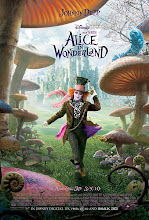Written By E. Corrado
Animation is prominent in movies now more then ever. And not just in animated films. As is now well known, CGI graphics are used commonly in live action films as well for special effects. In fact the first ever fully animated character as part of a special effects effort was the Stained Glass Knight in 1985, which took over four months to create at Industrial, Light and Magic, for Young Sherlock Holmes.
Since then, the field of using animation as a means to special effects has skyrocketed. The majority of action films use at least some element of CGI to do things that would be otherwise too difficult, or dangerous. Some movies are taking this to a new extreme. Speed Racer which came out last May was, amazingly, human actors in a completely CGI world. The effect is very cartoonish and futuristic, yet interesting in a way.
Another debate in the world of animation is whether or not Motion Capture technology is ‘cheating’. I honestly don’t think so. CGI uses Key Frame Animation filling in the frames that would have been otherwise drawn by hand. Motion Capture captures the movements of the actors, and then transfers that data into the computer. The textures, and backgrounds are added in later through animation. The animators can also modify some of the data that is put in, i.e. to change movements, if they so wish. I consider Motion Capture to be an extension of the medium, and a kind of blend between live action and animation. It’s something that can reap benefits from both.
Claymation, or other elements of Stop-Motion techniques, are also forms of animation, and not any lesser forms. Stop-Motion can be done simply with a camera on a tripod, taking consecutive pictures of an object that is being moved one step at a time, or can be used for a full movie such as the brilliant Chicken Run, or Wallace and Gromit: Curse of the Were-Rabbit, both made by Aardman. These were both traditionally Stop-Motion animated through Claymation, although Flushed Away, their latest feature-length film, was done with CGI instead. The thing is, that the CGI was done in such a way that it appeared to be Claymation, complete with fingerprints.
Animation is universal, and is used universally in all kinds of ways. It doesn't matter how it’s done, so long as it benefits the story. As is the origins of the word animation, it comes from the Latin animatio(n-), from animare; ‘instill with life’. And that should be the goal of all movies - to present a story that is full of life, and presents itself as such to the viewer.
Want to read my last installment from two weeks ago? Click here.








No comments:
Post a Comment